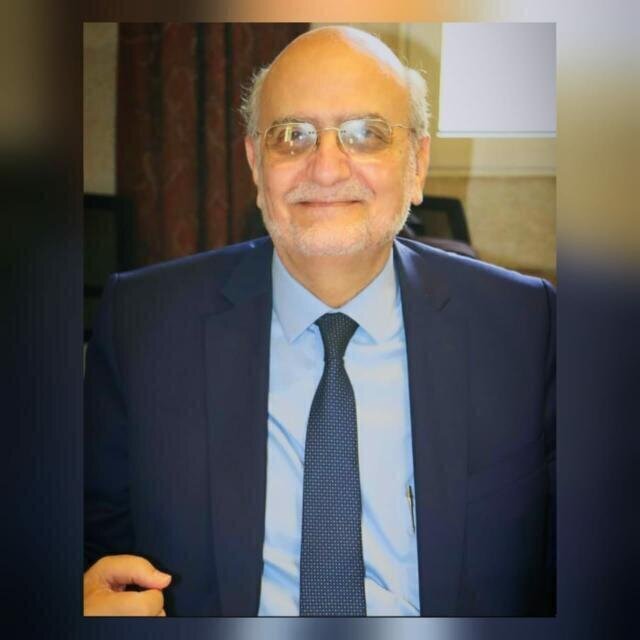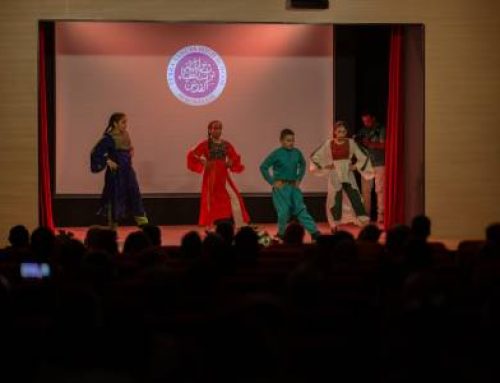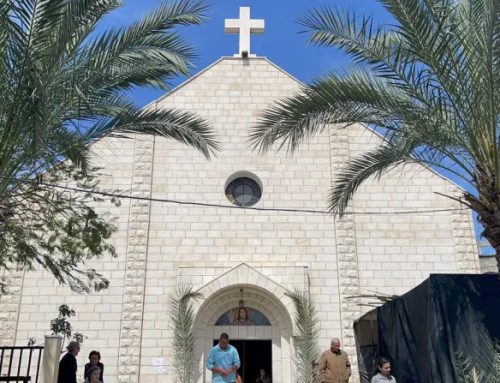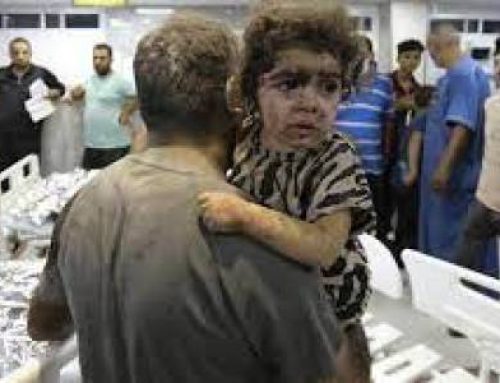The Secretary General of the Middle East Council of Churches (MECC) Dr. Michel E. Abs delivered this speech at the round table organized by MECC under the title “Shared Religious Spaces in the Middle East, The Feast of the Annunciation in Lebanon as an Example”. It was held as part of the activities of the MECC Fiftieth Year of its Founding, on Saturday 23 March 2024, at the Headquarters of the MECC General Secretariat in Beirut and online.
Dr. Michel E. Abs
The Secretary General of the Middle East Council of Churches (MECC)
In the midst of conflicts, disputes, and even hate speech, which often includes mutual criticism at the level of religious belief, we tend to forget our similarities and the many things we share. These commonalities overshadow what divides us, proving that we are peoples who have lived on the same earth, under the same sky, breathing the same air and drinking the same water. We have exchanged many ideas and sayings, interacted with the same values, shared the same aspirations, and most importantly, belong to the same homeland, and therefore, share the same destiny.
In our region, our country, we belong to different religions, as is the case in the world today. If religion becomes an element of discrimination and division, it signifies that we are a nation ready to split at any moment, or at any political juncture. We could easily add the element of ethnic or racial division to the religious division.
This is on the social and political surface.
However, if we delve into our cultural structure, and our mental and value structure, we realize that in this same field that could be the cause of our division, there is something that unites us deeply, but of which we are not aware, so we do not recognize its value and do not adopt it as a paradigm of interaction that unites instead of dividing.
On a purely religious level, that is, at the level of religious belief, and despite the existence of fundamental differences between different beliefs, we must acknowledge that there are common elements that strongly unite people, and which are deeply rooted into their faith.
We have taken the subtitle of this seminar, “Annunciation Day in Lebanon as a Model”. This holiday has transitioned from a national commemoration day to a national holiday, and it has become accepted by everyone, after some initial objections were raised. This universal day, the day of Angel preaching Mary of the Incarnate, as mentioned in the Bible and the Qur’an, has become a national day for all Lebanese, based on biblical texts known far and wide and easily revisable in our books of faith.
Do you think that the interfaith space is limited only to this occasion? Have you read what is said in the Holy Quran about Jesus and Mary and the honor they receive? Have you read about the Holy Spirit? Have you explored the common values contained in the two Holy Books?
This is on the religious level, and if I wanted to expand on the subject, I could have written volumes.
On the religious-social level, that is, at the cultural level, the list goes on even longer.
Daily observations show how much the Lebanese and the Arab peoples have lived religious-social mutual maturation on many levels, and have produced, in this context, a new mentality which essence is that I cannot condemn the other for what is contradictory with my faith, because this threatens civil peace and destroys society, and this is not in anyone’s interest. Therefore, I must respect what he believes in, provided that he does not impose it on me or adopt it in order to destroy our common life.
In return, I can interact with him in what is already in common, or what may grow as a result of sharing life, in a crucible of interaction that has lasted for centuries or more.
The evidence in our daily lives is plentiful and countless. Every day, we, as researchers in sociology and anthropology, discover new phenomena.
Have you heard of the phenomenon of breastfeeding brothers? Do you know how many non-Christians have a grotto or a Christmas tree in their house? Do you know how many non-Christian children participate in the Palm Sunday Pilgrimage? Do you know how many Muslims attend the Resurrection prayers in solidarity and love with the people of their Christian villages or neighborhoods? Do you know how many Christians love the month of Ramadan and share it with Muslims? Do you know how many villages prepare religious related sweets to honor their partners in the village who are not of their religion? Do you know the story of the sheikh from Hasbaya who refused to get paid for the gravel to renovate the church because he doesn’t accept religious endowment money? Do you know how many non-Christians make vows and worship Christian saints? Did you know that in many villages in the northern Levant, they draw the sign of the cross on the dough before baking it? Do you know how many people in downtown Beirut used to pray, make donations, and stand in front of Saint Mary’s icon? Do you know how many Christian from Bekaa have pledged their children to Sayyida Zainab in Damascus? Do you know how many people, from both religions, memorize texts from the book of the other religion, from the Bible, the Qur’an, and Nahj al-Balaghah? Have you read the poems written by Muslim poets about Jesus? Have you read Dr. Edmond Rabat’s book on the Arab Prophet, or other books about Imam Ali? Have you heard of Mahmoud Zibawi, the icon writer? Have you read the Arabic text written by a Lebanese Muslim calligrapher from the Baba family from Sidon in the ceiling of the dome of the Paulist Church in Harissa? Did you know that the story of the Holy Family’s refuge to Egypt is a national culture, as is the Baptism where Jesus was baptized in Jordan, and the way of the conversion of the Apostle Paul in Syria? Have you seen how Muslims make pilgrimages to the Monastery of Our Lady of Saydnaya and the Church of Our Lady of Harissa or to the Church of Our Lady of Maghdouche or to the Monastery of St. George in Aidmoun and others? Do you know how many families keep the book of the other religion in their homes? Last but not least, do you know the number of religiously mixed families and the number of their children? Isn’t this generation of children a living space shared by religions? That’s just the tip of the iceberg and the list goes on.
This is the normal situation for normal human beings, who cannot be frightened of each other by those who stir up trouble and create fear. This maturity is the result of a normal, stable life during which people interact and take from each other customs, traditions, values, and aspirations, without affecting the faith of one or the other.
These are the spaces that we envisage talking about in this seminar and in subsequent seminars, which will be fully face to face, following up on this topic, which we consider to be of paramount importance in bringing people closer together, or at least, curbing hate speech or thought between them. This action will make people aware of what they have in common and will realize how much division and ostracism are a crime against the nation and society… For the sake of generations who are not yet born!
We bet on the thought of the participants and their love for their homeland and society, in order to devise effective ideas that contribute to spreading awareness and immunizing society against strife that may be caused to it by external or internal forces that seek to tear it apart in order to control it and plunder its resources.
The true believer is not a fanatic, but rather makes his religious belief a means of loving, showing compassion, embracing, and helping the other, regardless of his religious or ethnic identity, just as the good Samaritan did. Thus, he is closest to God because he was the most beneficial to his creation.
By Mecc






